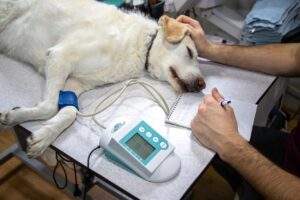Is Virus Is Living Or Non-Living Thing? Know About Virology?
What is a virus? Is it living or a non-living thing? Most of them have this query in their minds. But they don’t know what it is exactly. Viruses are the subject that is the most dangerous and deadly diseases including influenza, Ebola, rabies, and smallpox. Viruses are both living and nonliving organisms.
They have genetic knowledge that evolves through natural selection. Many experts believe they are a precursor to life, a pre-life form that provides us with an idea of how life changed from self-assembling, self-replicating organic molecules. The virus, an infectious cause of small size and simple structure. That can be multiplied only in living cells of animals, plants, or bacteria.
Virology journal allows manuscripts from basic, clinical and translational research on the viruses. It provides advances to an understanding of virus biology. It examines the nature of viruses, reporting important discoveries and pointing to new ways in research.
Oncology journal is the studies related to breast cancer, gastrointestinal cancer, lung cancer, skin cancer, head, and pediatric oncology, neck cancer, neuro-oncology so if you want to know about that, you can check out in it.
What are viruses made up of? The virus is made up of two parts they are genetic material and a protein coat. The like cells of any living organism contain genetic material in the form of nucleic acid. Some viruses include deoxyribonucleic acid (DNA) molecules while other ribonucleic acids (RNA). But unlike living cells, the virus itself does not have the machinery required to generate this material, only to assemble it. The protein coat is made up of same units of protein that collect into structures as coded by their genetic material, the RNA or DNA molecule they cover.
Consider Why Viruses Are Not A Living Organism?
Viruses are not living things because viruses are complex assemblies of molecules, including proteins, lipids, nucleic acids, and carbohydrates, but on their own, they can do nothing until they enter a living cell. Without cells, the virus is unable to do anything that’s why it is a non-living thing.
Do you know viruses are different from bacteria? Yes, virus and bacteria both are different, but both make us sick. Bacteria are small and single-celled, but they are living organisms that do not depend on a host cell to replicate. Because of these variations, bacterial and viral infections treated very differently. The antibiotics are only necessary against bacteria, not viruses.
Respiratory is one of the viral diseases which commonly affect the upper or lower parts of your respiratory tract. Some of the examples of respiratory diseases are:
- flu
- common cold
- respiratory syncytial virus infection
- adenovirus infection
- parainfluenza virus infection
- severe acute respiratory syndrome (SARS)
Symptoms Of Respiratory Diseases Are:
- runny or stuffy nose
- coughing or sneezing
- fever
- body aches
Prevention Of Respiratory Diseases:
There is the best way to prevent respiratory viral infections is to practice good individual hygiene. Need to wash your hands often, cover your mouth when you cough or sneeze, and limit your communications with people who show symptoms of a respiratory condition.







